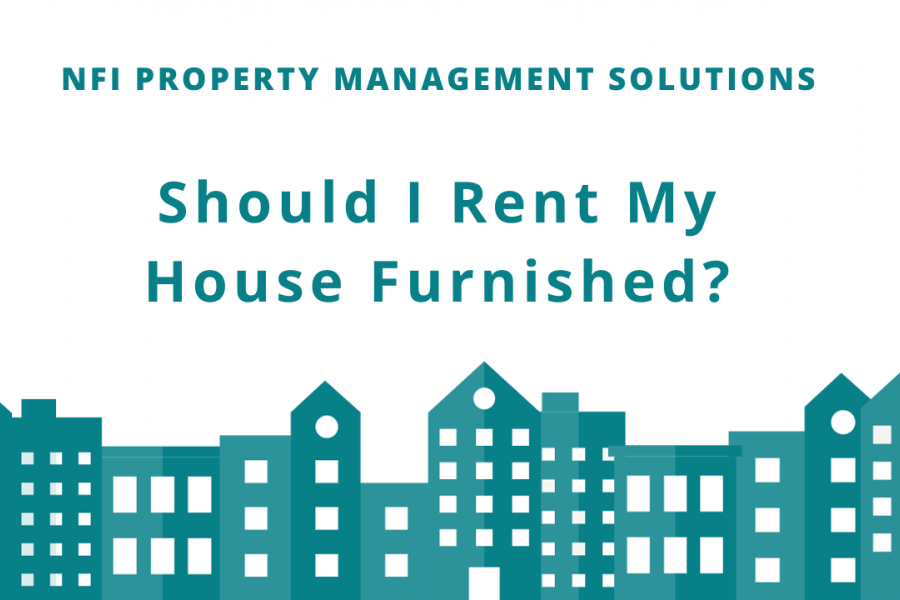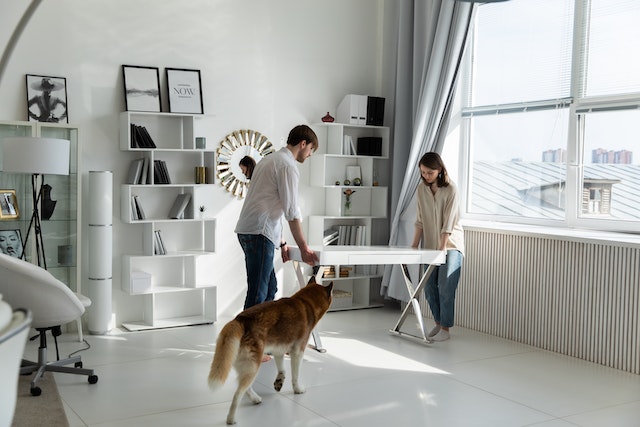
Are you a property owner considering renting out your home or apartment?
One question you might be asking yourself is whether to rent your property furnished or unfurnished. This decision can significantly impact your rental income, occupancy rate, and profitability. Renting a furnished home has benefits and drawbacks. It's important to weigh them carefully before deciding.
To help you with your decision, we will explore the pros and cons of renting a furnished home, so you can make an informed decision that suits your needs and goals. Whether you're a first-time landlord or a seasoned investor, understanding the advantages and disadvantages of furnished rentals can help you make the right choice and maximize your rental income.
What Is a Furnished Rental?
A furnished rental is a property equipped with all necessary furniture, appliances, and home accessories a tenant could need. This form of rental is perfect for renters who want a hassle-free living situation where they don’t have to think about buying or moving furniture. A furnished rental typically includes a bed, sofa, dining table, chairs, and other essential items.
Pros of Renting Your Home Furnished
Potential for Short Term Rentals
Furnished properties are ideal for short-term rentals, such as corporate housing, vacation homes, or temporary relocation. You can capitalize on the demand for short-term housing and charge higher prices if you own a property in a well-known tourist destination or commercial center.

Additionally, short-term rentals can give you more scheduling and turnover flexibility since you rent out the property for only a short period of time.
Narrow Down Your Target Market
Offering a furnished apartment makes you more likely to attract a specific group of renters, such as short-term or corporate housing renters. This will enable you to target a particular demographic of renters and develop a niche market for your home.
For instance, if you have a property close to a university, you could offer furnished apartments tailored to students. This might consist of simple furnishings, a workstation, and other conveniences that are necessary to students. By catering to this niche market, you can increase your occupancy rate and rental income.
Attract More Renters
By offering a furnished apartment, you can attract renters who might not have the resources or desire to furnish an apartment on their own. This encompasses short-term tenants and people moving to a new city for employment or school.
By providing completely furnished apartments, you can make life easier for tenants and spare them the expense and hassle of buying and moving furniture. This can make your property more appealing to renters who might not otherwise consider an unfurnished apartment.

A furnished apartment may also appeal to those seeking a more fashionable or upscale living environment. Furnished apartments frequently feature modern or upscale furnishings and decor. You can tap into this market and possibly charge a higher rent if you provide upscale furnishings.
Convenience for Renters
An unfurnished apartment cannot compare to the level of convenience offered by a furnished rental. Many tenants relocating to a new city or nation want to avoid purchasing or renting furniture for their new apartment.
The ease of having all the necessary furnishings, appliances, and even kitchenware already in place when renting a furnished apartment is a benefit for many renters. This saves tenants time and money and makes the moving process less stressful.
Additionally, furnished apartments often have amenities like Wi-Fi and cable, which are important for many lessees, but can be costly to install.
Higher Rental Cost
Offering a furnished apartment allows landlords to charge a premium rent, which can significantly increase the income generated from the property. Due to the extra ease and amenities furnished apartments provide, their rent is typically more expensive.
Some renters are willing to pay more for an apartment completely furnished and outfitted with all the required appliances. This means that by raising the rent, landlords can cover the expense of furnishing the apartment and increase their return on investment.

Additionally, the higher rent can help reduce the expense of replacing or repairing broken furniture.
Cons of Renting Your Home Furnished
Mostly Short Term Rentals
Tenants who are looking for furnished apartments are usually looking for short-term accommodation. This means that there is a higher turnover rate for furnished rentals, which can lead to additional costs associated with finding new tenants.
If your goal is to attract long term tenants, then a furnished rental may not be the right choice for you.
Differing Preferences
Furniture and home decor trends change frequently. Landlords who rent furnished properties must stay on top of these trends to keep their properties competitive.
On top of that, tenants may not want to keep the furniture you provide, which means you will have to store or dispose of it once they move in. This can be an additional cost for landlords.
Damaged or Stolen Furniture
Furnished apartments are more susceptible to damage and theft. This means that landlords must be prepared to replace or repair items if they become damaged. This increases maintenance necessities for landlords.
Conclusion
Renting a furnished home can have its advantages and disadvantages for landlords. It allows landlords to target short-term renters and charge higher rent, but it also comes with additional costs and risks associated with furniture maintenance and damage.
Ultimately, the decision to rent a furnished home will depend on your specific situation as a landlord, including your target market, location, and personal preferences.
If you do decide to rent your property furnished, working with a professional property management company like NFI Property Management can help make the process easier. They can help you navigate the challenges of renting a furnished property, from marketing and screening tenants to managing furniture maintenance and replacement.